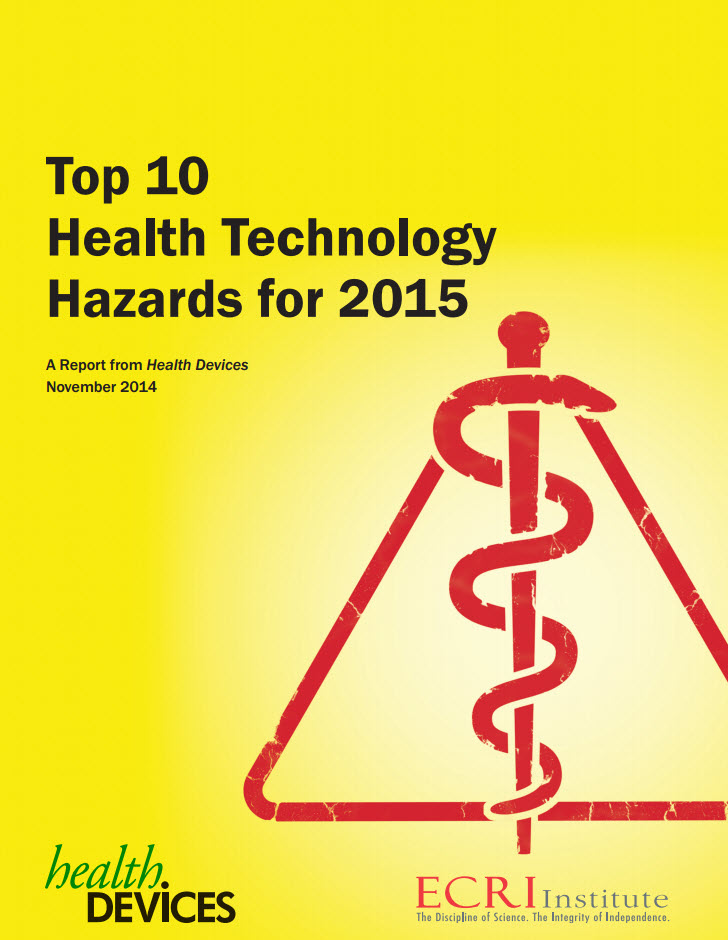The ECRI Institute just released its 2015 top 10 medical technology hazards faced by hospital patients
 Device-related hazards can lead to medical malpractice. In its 2015 top 10 Health Technology hazards, ECRI Institute lists 10 safety topics deemed crucial for hospitals to address. Here is the list of the top 10 technology hazards;
Device-related hazards can lead to medical malpractice. In its 2015 top 10 Health Technology hazards, ECRI Institute lists 10 safety topics deemed crucial for hospitals to address. Here is the list of the top 10 technology hazards;
1. Alarm hazard: inadequate alarm configuration policies and practice 2. Data integrity: incorrect or missing data in EHR’s and other Health IT Systems 3. Mix-Up of IV lines leading to misadministration of drugs and and solutions 4. Inadequate reprocessing of endoscopes and surgical instruments 5. Ventilator disconnections not caught because of mis-set or missed alarms 6. Patient-handling device use errors and device failures 7. “Dose Creep”: unnoticed variations in diagnostic radiation exposures 8. Robotic surgery: complications due to insufficient training 9. Cyber security: insufficient protections for medical devices and systems 10. Overwhelmed recall and safety-alert management program
In future blogs we will look at each of these medical technology hazards in detail.
 New York Personal Injury Attorneys Blog
New York Personal Injury Attorneys Blog


 Jeff Bloom, a partner at
Jeff Bloom, a partner at  Our partner
Our partner 

